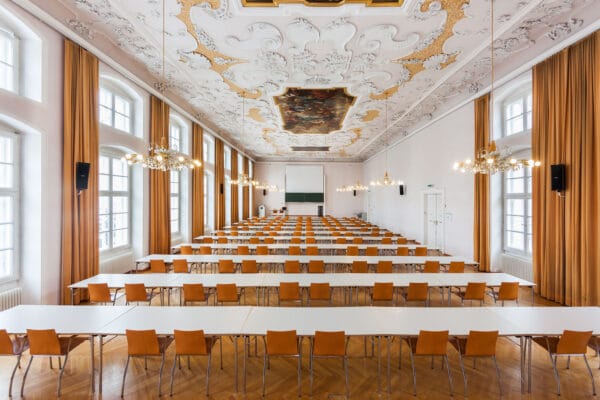
NAME:
Theologie - MS
BUILDING:
Theologie
FLOOR:
2
TYPE:
Lecture Room
CAPACITY:
108
ACCESS:
Only Participants
EQUIPMENT:
Beamer, PC, WLAN (Eduroam), Overhead, Flipchart, Blackboard, Handicapped Accessible, LAN, Microphones, Sound System
The Val di Cembra, located in the Trentino-Alto Adige region of Italy, is undergoing significant development activities aimed at enhancing its agricultural and cultural heritage. The valley, known for its terraced viticulture, has maintained its landscape largely unchanged in the past centuries, showcasing the enduring nature of its agricultural practices. The ongoing development activities focus on several key elements that contribute to the valley’s unique character and sustainable development. Dry stone walls (UNESCO intangible heritage) represent a crucial aspect of the terraced vineyards, providing structural support and contributing to the aesthetic value of the landscape. The traditional vine training system known as the “pergola trentina” is being promoted as unique character of the local viticultural area. Rural buildings, or “baíti,” are another focus of the development activities via the exploration of alternative uses, including rural tourism. The valley also features an agro-ecological mosaic, characterized by the alternation of habitats, which supports biodiversity and other ecosystem services. Finally, the historical and cultural heritage of the Val di Cembra is being highlighted through various archaeological findings and initiatives, including the preservation of ancient wine vessels, religious statues, and traditional festivals that reflect the valley’s rich cultural history. One of the primary activities, which involved a detailed mapping and documentation of the current and past land use, was the registration of the terraced vineyards in the National Register of Rural Landscapes, followed by the adhesion to the dedicated national association PRIS, to preserve the traditional agricultural practices and recognize the cultural significance of the terraced vineyards. Currently, the Val di Cembra is pursuing GIAHS (Globally Important Agricultural Heritage Systems) candidacy. This initiative aims to recognize and promote the valley’s unique agricultural heritage on a global scale while embracing an agroecological approach to guide its agricultural and community development. These ongoing activities for the development of the Val di Cembra are aimed at preserving its historical and cultural heritage, showcasing the active role of humans in maintaining and adapting the landscape over time while promoting sustainable agricultural practices and enhancing the valley’s economic potential.
